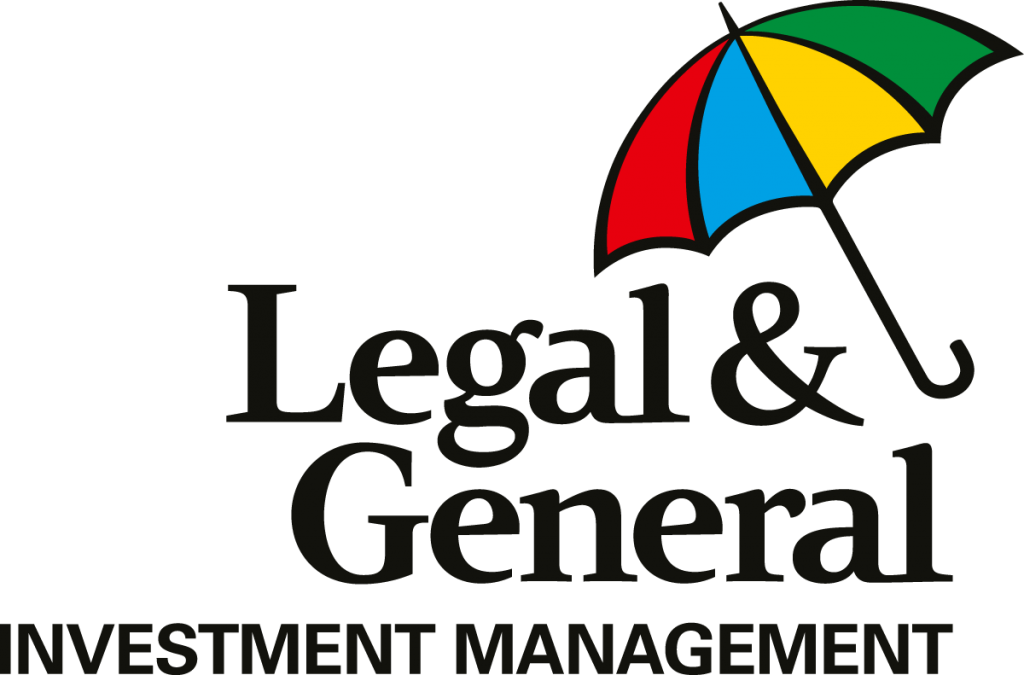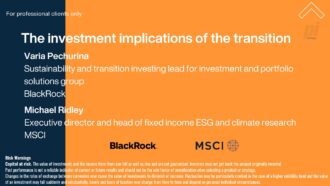Smaller schemes are missing out on fiduciary expertise and so have greater exposure to market shocks. portfolio institutional spoke to Legal & General Investment Management’s Tim Dougall and Lisa Purdy to find out how they are supporting smaller schemes.
How has the market turbulence resulting from the pandemic impacted smaller pension schemes?
Lisa Purdy: Smaller schemes tend to suffer worse funding outcomes. According The Purple Book, those with 100 to 1,000 members are the worst funded that’s over 2,000 schemes. So, this turbulence is impacting a big part of the market.
The challenge is that smaller schemes tend to have less time, resource and budget. This is why we are seeing a lot coming out from the regulator and the PLSA around consolidation.
Tim Dougall: These big market falls are similar to the position we saw after the financial crisis where schemes that had not diversified or hedged their risks suffered from falling funding levels.
If markets are okay and rates are not moving, then it isn’t a problem, but it comes to the fore after a big crisis when people realise that they are exposed to some big impacts.
It is the smaller schemes, the ones with little or no governance budget, diversification or risk protection, that suffer the most.
How is Legal & General Investment Management (LGIM) supporting smaller pension schemes?
Purdy: Smaller schemes have been underserved in the fiduciary management space where they have either not been able to access such a service or use a cut-back version.
In response, we are launching LGIM NavGuide, which we have developed to deliver fiduciary management to small schemes.
It uses an innovative technology platform so that we can provide a low cost offering without having to reduce services. This platform enables smaller schemes to access all the great things fiduciary management offers including LGIM’s expertise and the governance benefits that enable them to concentrate on their strategic decisions and leave the day-to-day implementation to experts.
Through our link with Legal & General, LGIM NavGuide also provides a seamless route to buyout. Small schemes can struggle to gain traction with insurers in the buyout market. So, giving them a seamless route through and the expertise is helpful.
We are using the phrase: better, cheaper, faster. LGIM NavGuide offers better governance and investment strategy at a lower cost. Schemes can access online dashboards, real time information and rapid delivery, so: better, cheaper, faster.
Dougall: There are low cost funds that have good implementation, but where smaller schemes struggle is on the strategy piece and being able to implement something that is truly diversified. Helping with strategy, cost-effectively, and doing the day-to-day management for them is where we are trying to help.
Technology has the potential to transform the pensions landscape, so how else are you using tech?
Dougall: The pensions industry has been slow to adopt technology despite it transforming other industries. What we are trying to do is bring the benefits of technology to the pension investment market.
There are a couple of things we can do with it. It hugely increases efficiency, for example. If we can use technology to improve the way we collect and manage data that will allow us to provide lower-cost services, which will flow through to a scheme’s investment performance.
It can also help provide better client services. Online tools help schemes access and update information quickly and efficiently. With LGIM NavGuide we can provide strategy advice to smaller schemes more cost effectively. Previously, they may not have been able to afford advice that is tailored to them.
We can now take some of the benefits the larger schemes enjoy, scale them down and bring it to the smaller schemes. So, we are providing a bespoke solution to individual small schemes.
Purdy: One of its many benefits includes being a useful tool for consultants and professional trustees who work with smaller schemes. Some of these schemes tend not to have a dedicated investment consultant, so the professional trustee, actuary or pensions manager picks up a lot
of this work. So, this can be used to provide better outcomes.
They are gaining access to all of LGIM’s fiduciary management services, including strategic advice, implementation and monitoring, which will enable professional trustees/consultants to support their smaller clients. Because of the way the solution is built, they can manage multiple clients on the platform. It is a quick and easy interface for them to provide smaller schemes with access to low cost and more efficient portfolios.
LGIM NavGuide also provides portfolio analytics. If they are looking at strategy and want to know what the impact of a change in deficit contributions would be or looking at a lower or higher than expected return, they can do that in real time. There are lots of tools for clients and consultants to use.
What would a typical investment strategy look like for a scheme that does not have diversification or interest rate hedging?
Dougall: Smaller schemes who have not had access to strategic advice will probably have a relatively simple portfolio of UK equities, gilts and perhaps some corporate bonds, so not much diversification. Perhaps they have not thought about the overall level of risk either.
We are targeting the schemes where we think there is a lot more that can be done. We will get alternatives and more dynamic strategies into the portfolio and look at bespoke liability hedging to match their liability cash-flows.
We still give trustees the opportunity to tweak things such as the level of ESG integration they want and the level of liquidity they would be comfortable with.
These will be scheme specific and considering that on a scheme-by-scheme basis is what we aim to do.
Purdy: The other piece of that is the journey planning and managing a longerterm strategic objective. It is the smaller schemes which do not have the time to focus on those strategic objectives. We can put in place a plan and de-risking triggers and monitor them, so they get the
whole package.
How is ESG being integrated across your portfolios?
Dougall: Across LGIM, ESG is considered as a very important issue. Therefore ESG considerations are fully integrated across all of our fiduciary portfolios through our active engagement and the work of our investment stewardship team. If clients wish to go further than that by having full ESG integration we can use our Future World funds to build a bespoke portfolio, which means tilts towards companies and stocks that have favourable ESG ratings.
There will also be some exclusions of companies that are blacklisted on an ESG basis.
Finally, could you tell me more about the route to buyout for smaller schemes?
Purdy: Legal & General is a large insurer so we can provide a seamless route to buyout. For our fiduciary clients, we provide live transactable buyout pricing as part of our NavGuide service. It is an actual price (not an estimate) that they can take and we can monitor going forwards.
Once our clients hit a particular funding level we can move the portfolio into price lock. This means that while they are sorting out the legals, for example, their assets will not move away from the price, so it is immunised. Once that is sorted, we can transition the assets to Legal & General at zero cost.
They are not locked into Legal & General, they can go out to the market but the live buyout pricing and support on their transition is just part and parcel of the service we provide.





